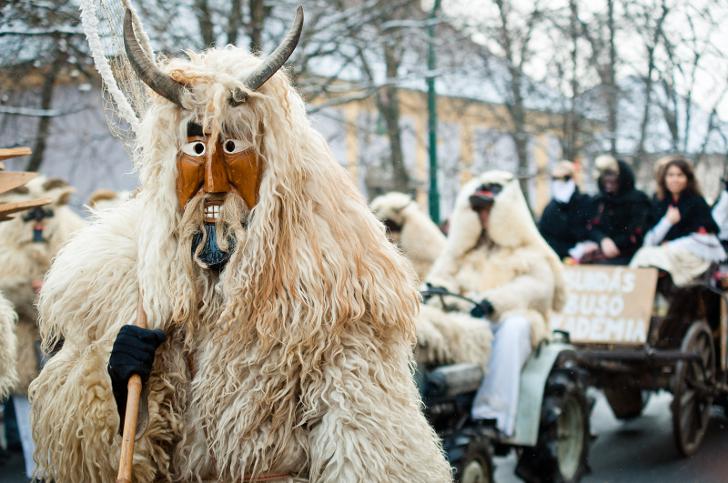The Busójárás dates back at least to Ottoman rule in Hungary that lasted from 1541 to 1699. According to local legend, when Hungary was occupied by the Ottoman Empire, many people from Mohács chose to flee the town. They started living in the nearby woods and swamps to avoid Ottoman troops.
One night, an old men appeared suddenly from nowhere and told the refugees that their lives would soon turn to good. He told them to make weapons and scary masks in order to prepare for the battle with the invaders. Several days later, on a stormy night, a knight appeared before the refugees and ordered them to put on their masks and go back to their home town making as much noise as they could. The Turks were scared by the noise, masks and stormy weather. They thought that they were attacked by the demons, gave up without a fight and ran away. The Busójárás was first celebrated in honor of this victory.
According to another theory, the celebration is much older. Its roots go back to ancient pagan celebrations of the return of the light after a long winter. The masks worn by the busós (the main carnival figures) are intended to scare away the winter.
Be that as it may, the locals have celebrated the Busójárás for centuries. The festival is very similar to Slovenian Kurentovanje as both celebrations feature scary masked characters that participate in festive processions. In 2009, the Busó Carnival was added to the UNESCO Representative List of the Intangible Cultural Heritage of Humanity.
The Busójárás is usually celebrated in February, starting on the Thursday before Ash Wednesday (the first day of Lent). The celebration includes parades of the busós (traditional characters wearing masks with horns and sheepskin coats), folk music, dancing and masquerading. The biggest parade takes place on Carnival Sunday. Every year, the Carnival welcomes guest busó teams from other countries such as Croatia, Serbia, Slovenia and Poland.

Photo: mohacsibusojaras.hu



